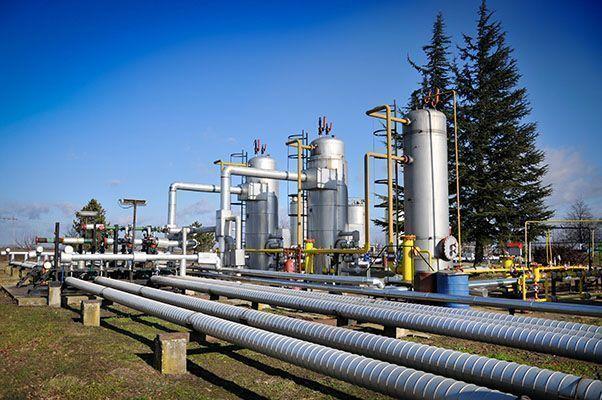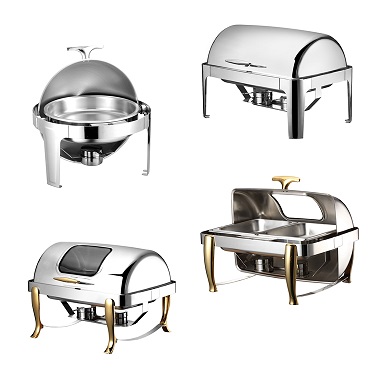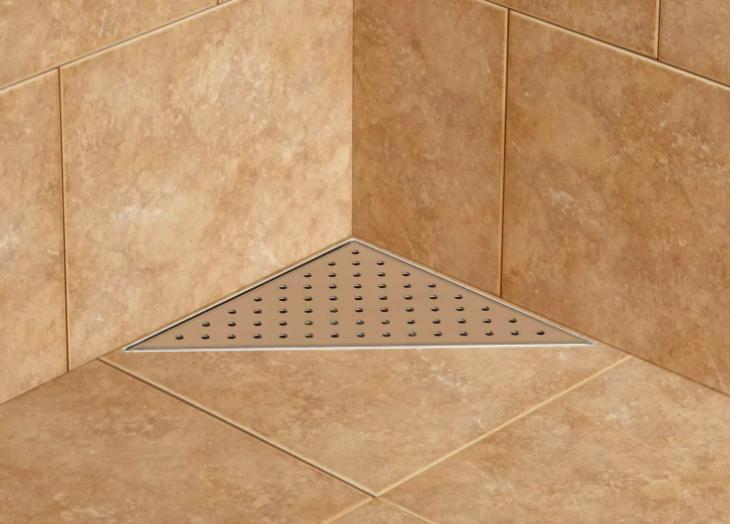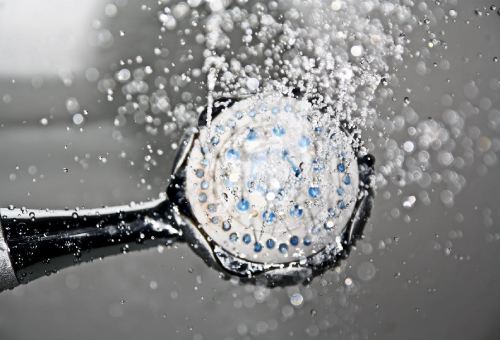Decree 125/2016, which regulates the inspection and review of gas receiving facilities
Decree 125/2016, which regulates the inspection and review of gas receiving facilities
Decree 28/2002, of January 29, regulated the inspections and revisions of the gas reception facilities in service for domestic, collective or commercial uses, specifying the necessary actions that the owners and the distribution companies had to carry out in order to check the status of the facilities and improve their safety, and defining the scope of the checks, as well as the effects of not carrying out said inspections. Specific aspects of said decree were developed by order of April 16, 2002.
Over the years, this decree has undergone various modifications. It was modified by means of Decree 136/2007, of September 11, 2007, to incorporate the same inspection system to reception facilities supplied from liquefied petroleum gas (LPG) tanks that serve more than one user, and also by Decree 70/2009, of March 24, 2009, which extended the same inspection system to the rest of the individual gas receiving facilities supplied with containers or through an LPG tank, a modification that was partially annulled by the Supreme Court by ruling dated 11-20-2013.
Similarly, the order of April 16, 2002 was modified by another order of October 8, 2007 regarding the description and qualification of defects that can be found in gas inspections or reviews.
On the other hand, Law 8/2015, of May 21, which modifies Law 34/1998, of October 7, of the hydrocarbon sector, has introduced a new regime in the inspections of gas receiving facilities by channeling, both natural gas and liquefied petroleum gases, allowing them to be carried out by authorized gas installation companies appointed by the holders, and establishing their obligation by the gas distribution company only in the absence of said inspection by installation company.
The foregoing justifies the proceeding to the preparation of this regulatory text that regulates, for the territorial scope of this Autonomous Community, the legal regime applicable to periodic control, determines the criteria to be taken into account in carrying out inspections of this type of installations and precisely contemplates the necessary actions to be carried out by both the authorized gas installation companies and, where appropriate, by the gas distribution companies, for the adequate fulfillment of the safety objective, based on an exhaustive control of this type of facilities that, traditionally, has been proposed by the Administration of the Autonomous Community of Euskadi.
This Decree therefore seeks to facilitate compliance with the obligations that current technical regulations attribute to owners or users of this type of facility, defining and regulating the scope, technical procedure and content of the control that must be carried out on these facilities. Likewise, it defines the obligations of the agents involved in the inspection and review processes and determines the actions to be carried out in the event of non-compliance with their obligations by the owners or users.
By virtue of this, in accordance with the Opinion of the Euskadi Legal Advisory Commission, at the proposal of the Minister of Economic Development and Competitiveness, after deliberation and approval by the Governing Council at its meeting held on September 6, 2016,
I HAVE:
CHAPTER I
GENERAL DISPOSITION
Article 1.- Purpose and scope of application.
1.– The purpose of this Decree is to regulate the periodic controls that must be carried out on gas receiving facilities, after they are put into service in the Autonomous Community of Euskadi.
2.– The provisions contained in this Decree shall apply to all types of gas reception facilities, whether natural gas or liquefied petroleum gas (LPG), regardless of the form of supply or distribution.
Article 2.– Control of installations in service: inspection and revision.
1.– All installations included in the scope of application of this Decree must be subject, depending on the type of installation, to an inspection or periodic review.
2.– Inspections will be carried out at facilities connected to distribution networks or liquefied petroleum gas (LPG) deposits that are able to provide service to more than one user.
3.– The revisions will be carried out in those facilities that, supplied by containers or by liquefied petroleum gas (LPG) tanks, are designed to serve a single user.
Article 3.– Periodicity of the inspection or revision.
The inspection or review of the facilities will be carried out every 5 years. The control must be carried out within the calendar year in which it corresponds to carry it out from the date of commissioning of the installation or the last inspection or periodic review.
Article 4.– Obligations of the holders or users.
1.– The holders of the supply contracts, or failing that, users of the facilities, will be responsible for the correct use of the same, for their adequate maintenance and for carrying out the periodic controls provided for in this Decree.
2.– In the case of installations subject to inspection, in accordance with section 2 of article 2, they must carry out the same with an authorized gas installation company or with the gas distribution company itself. In the absence of communication of the result of the inspection within the period established for this purpose in accordance with article 7.2, it will be understood that the owner wants the inspection to be carried out by the distribution company and it will be the latter who proceeds to carry it out.
3.– In the case of installations subject to revision, in accordance with section 3 of the aforementioned article 2, said revision must necessarily be contracted with an authorized gas installation company.
4.– They will facilitate the inspectors or reviewers access to their facilities and will carry out, as soon as possible, the necessary actions to correct the defects detected in the corresponding inspection or review.
5.– In any case, they will adopt, until the correction of the detected defects, the provisional security measures indicated by the personnel carrying out the inspection or revision.
6.- In addition, they must attend to the recommendations that, in order to safety, are communicated to them by the gas distribution or supply company, the gas installation company, the manufacturer of the appliances, the technical assistance service or the body administrative competent in the matter.
Article 5.– Companies and personnel authorized to carry out inspections or reviews.
1.– The inspections or revisions of gas reception facilities will be carried out by installation companies or, where appropriate, distributors authorized to do so in accordance with Royal Decree 919/2006, of July 28, which approves the Technical Regulation of distribution and use of gaseous fuels and its complementary technical instructions ICG 01 to 11.
2.– The companies that carry out the periodic controls, both installers and distributors, must have a control procedure that includes all the actions related to the inspection or revision.
These procedures must be drawn up taking into account the criteria indicated in Annex 1 and must be made available to the competent body in matters of industry.
3.– The list of gas installation companies authorized to carry out inspections or reviews that are located in this Autonomous Community will be available on the web portal of the Department responsible for Industry, so that it can be consulted by users. .
4.– The personnel of the authorized gas installation company, or, as the case may be, of the gas distribution company, who carry out the inspection or review, must have authorization as a gas installer, in the corresponding category, depending on the type of installation.
Article 6.– Scope of the inspection or review.
1.– In general, both in the inspection and in the review, regulatory compliance must be checked, in accordance with the criteria provided for in the applicable regulations; for which the necessary tests and verifications will be carried out to verify the state of operation and conservation.
2.– The inspection or review will include both the individual reception facility and, where appropriate, the common facility.
The checks will cover the gas circuit (including all kinds of conduits and accessories from the gas connection tap, excluding it), the gas-consuming appliances, the evacuation system for the products of combustion, the local ventilation system where the appliances and the premises are installed, as well as the premises through which the gas pipes run.
Annex 2, in section A, determines the scope of the inspection or review based on the party affected by it.
3.– The equipment necessary to carry out the aforementioned tests must be duly calibrated, when necessary, and in adequate conditions of use.
CHAPTER II
INSPECTION AND REVISION OF GAS RECEPTION FACILITIES
Article 7.– Actions prior to carrying out the controls. Notice of inspection or review.
1.– The distribution or supply company will send a notice to its users, at least three months in advance, of the need to carry out the periodic inspection or review of their individual and/or common receiving facility, which must contain, at least , the next information:
– Date of the last inspection or review, or failing that, date of commissioning.
– Universal supply point code (CUPS) or unique reference number for common reception facilities or liquefied petroleum gas facilities.
– Place where you can consult the list of authorized gas installation companies.
– A toll-free telephone number for customer service to which you can contact.
– Indication that, if applicable, it will be the installation company that will notify the distribution or supply company of the result of the inspection or revision and the consequences of not carrying it out.
– Normative references for carrying out the inspection or review.
2.– For installations subject to inspection, the inspection notice from the gas distribution company must also contain:
– Information on the possibility that the holder has of choosing who he wants to carry out said inspection, being able to choose between the same distributor or any authorized gas installation company with sufficient category to carry out the revision according to the type of installation, as established in Royal Decree 919/2006, of July 18.
– Deadline for carrying out and presenting the inspection certificate, in the event that the holder decides to carry out the inspection with an authorized gas installation company. Said date may not be less than 45 calendar days from the date of remittance of the notice from the distribution company. It should also be indicated that in the event that the installation company has not sent the corresponding certificate to the distributor before the indicated deadline, it will be understood that the person wants the inspection to be carried out by the distributor itself.
– Week scheduled for the inspection in case of carrying it out with the distribution company.

– The costs, VAT included, that must be borne for managing the inspection of the individual installation and the common part.
– The cost of the inspection, VAT included, which would entail if you decided to carry it out with the distribution company itself.
Article 8.–Suspension of supply due to failure to carry out an inspection or review.
1.– The gas distribution or supply companies, in addition to other cases contemplated in the regulations applicable to this type of installation, must suspend the supply when the owner has not complied with his obligation to carry out the inspection or review of his installation.
2.– In the event of installations subject to inspection, after the period in which the inspection should be carried out without it having been carried out, whatever the cause, the distribution company will require the owner, by a means that enables its verification, so that, within a period of two months, it can contact it, in order to indicate, during working hours, the day and time for carrying out the control, advising it that failure to carry out the inspection within this period will entail, where appropriate, the suspension of the supply.
Once the receipt of the aforementioned requirement, or its attempt to materialize, has been duly accredited, once the period established in the previous point has elapsed without the inspection having been carried out, the gas distribution company will proceed to suspend the supply.
Previously or in the same act of suspension of supply, the distribution company must notify the holder or user of the suspension of supply and will notify the marketing company.
3.- In the event of installations subject to review, if the same has not been carried out, whatever the cause, within the stipulated period, the gas supply company will require the owner, by a means that enables its verification , so that, within a period of one month, it accredits before said company that the review has been carried out, advising it that after said period the supply will be suspended.
Once the aforementioned period has elapsed without proof that the review has been carried out, the supply company will stop supplying gas to the installation site.
4.– The suspension will last until the corresponding inspection or review is carried out.
For installations subject to inspection, this will be carried out by the distribution company, for which it will previously resume the gas supply.
5.– The distribution or supply companies must communicate to the corresponding Territorial Delegation competent in matters of Industry, in the manner determined, the suspensions of supply that have been carried out, expressly mentioning the causes and procedure followed.
Article 9.– Inspection of gas installations.
1.– If the owner opts for the inspection to be carried out by an authorized gas installation company, the result of the inspection must be communicated to the distribution company before the deadline indicated in accordance with article 7.2. Once this period has elapsed without the inspection certificate having been sent to the corresponding gas distribution company, it will be understood that, to carry out the inspection, the owner has opted for the distribution company and the latter will proceed to carry it out, prior communication to the owner of the date of the inspection at least 5 business days in advance.
2.– The gas distribution companies must carry out the inspections with personnel, either their own or contracted, who have a license as a gas installer in the corresponding category, depending on the type of installation.
For these purposes, the inspection carried out by contracted personnel will be considered an inspection of the distribution company, which is solely responsible, both towards the owner or user and towards the Administration.
3.– The installation companies that carry out the inspections of the gas installations or those that have been subcontracted by the gas distribution company may not carry out the repair of the defects detected in them.
4.– The costs derived from the inspections carried out by the distributor or from the information management of the inspections carried out by authorized gas installation companies may not exceed those regulated for these actions in the corresponding decree.
Article 10.– Review of facilities.
1.– The revisions of the gas reception facilities must be carried out in the period established in article 3 of this Decree.
2.– The periodic review, in bottled gas installations (bottles) and fixed LPG storage tanks that serve a single user, will be carried out by duly authorized gas installation companies.
Article 11.– Evaluation of the defects and actions in case of detecting defects in the controls.
1.– After carrying out the checks indicated in article 6, the inspection staff will evaluate, if they exist, the defects observed in the facilities based on the risk they present, proceeding to qualify them as:
– Serious defects: those that may present an imminent risk of an accident.
– Minor defects: those that fail to comply with regulatory provisions or present a lower risk.
Annex 2 in its section B establishes the criteria to carry out the evaluation of the defects.
2.– In the event of detecting one or more serious defects that cannot be corrected at the time, the personnel carrying out the inspection must immediately put the installation out of service, closing and sealing the gas passage valve to the installation. , to the apparatus, or to the affected part.
The affected part must remain out of service until the serious defect detected has been corrected.
In any case, the detection of this type of defects must be communicated, by a means that allows proof of the communication, as soon as possible to the gas distribution or supply company, and the installation may not be supplied until the correction. thereof.
If 48 hours have elapsed since the inspection or review has been carried out without the gas distribution or supply company having received a certificate of correction of defects, it will notify the competent Territorial Delegation in matters of Industry for immediate ratification or revocation. of the precautionary measures adopted.
3.- Minor defects that are detected will be revealed to the owner or user of the installation, indicating that they must be corrected as soon as possible, and in any case, their correction must be accredited to the gas distribution or supply company. , before the expiration of the periods indicated by the inspection staff.
The inspection staff will set these deadlines in accordance with the criteria established in section C of Annex 2.
Article 12.– Certificate of inspection or revision of the facilities.
1.– The result of the checks must be documented in a certificate that will be delivered to the user at the time of the inspection or review.
2.– The inspection certificate must specify, as a minimum, the identification data of both the owner and the personnel who carry out the control, the location data of the installation, in the case of pipeline supply, the unequivocal reference number of the installation, installation data, the result of the control, and where appropriate, the list of all the defects detected with their corresponding correction period.
When necessary, the acting agent must indicate in writing the provisional security measures that must be adopted in the installation until the defects are corrected.
The record of the measurements made will be attached to the certificate.
Annex 3 includes models of the certificates to be used for individual, common or industrial establishment installations.
Article 13.– Referral of inspection or review certificates to the gas distribution or supply company.
1.– The authorized installation companies that carry out the inspections must send electronically to the distribution or supply company, the corresponding information on the inspections carried out, accompanying a copy of the corresponding inspection certificate and keeping another copy in their files during the period established by regulation. .
The distribution or supply companies must have a computer application to receive the information and inspection certificates and will keep at least the certificates of the last two controls. The computer application must register the reception and issue an acknowledgment of receipt for the installation company that presents it.
2.– Likewise, the authorized installation companies must send the corresponding information on the revisions carried out to the supplying company, electronically if possible, attaching a copy of the corresponding revision certificate and keeping another copy in their files during the period established by regulation. set.
3.– The information sent electronically must at least identify the installation company, the location of the installation, the result of the control and, if applicable, all the defects detected and their qualification, in accordance with article 9, as well as , where appropriate, the total cost to be billed to the user. It will be this information that determines the actions that the distribution or supply companies must carry out, without prejudice to the fact that, if there are allegations from the interested parties, it must be contrasted with that contained in the inspection or review certificates.
4.– In the event that a serious defect has been detected in the controls carried out by installation companies, the inspection or review certificate must be sent within a maximum period of 24 hours.
Article 14.– Correction of defects.
1.– The correction of defects in the inspection or revision must be carried out and certified by an authorized gas installation company, or, where appropriate, by the technical assistance service when the defect affects an appliance, and the corresponding certificate must be issued. of correction. However, the changes of flexible elastomer, the correction of ventilation problems or the installation of the interlock between the extractor hood and the boiler, may be accredited by the person or user.
Annex 3 contains a model certificate of correction of defects.
2.– The agents who make the corrections of the defects must send, electronically if possible, to the gas distribution or supply company the corresponding information on the corrections made, attaching a copy of the corresponding correction certificate and keeping another copy in their files. files during the period established by regulation. The information sent must at least identify the person who owns the installation or the installation company, the location of the installation, the identification of the defects corrected, indicating whether the correction covers all the defects detected.
3.– If all the serious defects detected in the inspection or revision have been corrected, the agent acting in the repair may put the installation into service. In these cases, you must send the correction certificate to the gas distribution or supply company within a maximum period of 24 hours.
4.- Once the term for correcting minor defects has been passed without its realization having been accredited before the distribution or supply company, the latter will notify the owner of the exceeding of said term and the responsibilities that may be incurred.
Article 15.– Claims.
The actions of the installation, distribution or supply companies may be the subject of the corresponding claim before the competent Directorate in matters of industrial safety.
Article 16.– Remission of information to the Administration.
1.– The gas distribution or supply companies must submit information on the inspections or reviews they have carried out or have been notified to the competent Directorate for industrial safety, detailing the number of controls carried out based on the result and the companies installers that have acted, with the periodicity and in the format determined by the competent body in matters of industrial safety.
2.– In any case, for each installation, the distribution or supply companies must have the information corresponding to the controls carried out on it and its results, as well as the identification of the companies acting and, where appropriate, the defects detected with their qualification and their correction, which must be made available to the competent Administration for Industry in a singular manner. In the same way, they will have at least the documentation indicated in Annex 4 and must send it to the competent Administration in matters of Industry before any requirement of the same.
FIRST ADDITIONAL PROVISION
Based on the provisions of article 79 of Law 34/1998, of October 7, on the hydrocarbons sector, the supply contract must expressly include, in addition to the generic obligation of adequate maintenance, the obligation of the holders or users of the facilities to carry out the corresponding inspection or review within the terms provided in this Decree.
SECOND ADDITIONAL PROVISION
In accordance with the provisions of Law 6/2003, of December 22, on the Statute of Consumers and Users, (articles 39 and 40.4) the gas distribution and supply companies will guarantee the linguistic rights of users in relations generated with them as a result of this Decree.
TRANSITIONAL PROVISION
Since the entry into force of this Decree and in order to adapt the periodicity of the controls to the provisions of article 3, the gas receiving facilities that, in accordance with Decree 28/2002, were obliged to pass the following periodic control on fourth calendar year after they had been put into service, inspected or revised, they may delay the completion of the same until the fifth calendar year.
REPEALING PROVISION
Decree 28/2002, of January 29, which regulates the inspection and review of gas installations in service, intended for domestic, collective or commercial uses (modified by Decree 136/2007, of January 11) is repealed. September, and Decree 70/2009, of March 24) and the Order of 04-16-2002 of development of the same (modified by the Order of 10-08-2007), as well as any provisions of equal or lower rank that contradict the provisions of this Decree.
FIRST FINAL PROVISION
The competent Minister for Industry is empowered to modify the annexes and dictate as many provisions as are necessary for the execution and application of this Decree.
SECOND FINAL PROVISION
This Decree will enter into force one month after its publication in the Official Gazette of the Basque Country.
Given in Vitoria-Gasteiz, on September 6, 2016.
The Lehendakari,
IÑIGO URKULLU RENTERIA.
The Minister of Economic Development and Competitiveness,
MARIA ARANZAZU TAPIA OTAEGUI.
ANNEX I TO DECREE 125/2016, OF SEPTEMBER 6
ACTION PROCEDURES FOR COMPANIES THAT CARRY OUT GAS INSPECTIONS OR REVIEWS
1.– The control procedure for gas installation companies must include at least the following aspects:
a) List of accredited personnel to carry out inspections or revisions and form of accreditation.
b) Material means necessary at the time of the controls, and their identification.
c) Models of all the documents to be used.
d) Actions prior to the inspection or review (selection of facilities, customer acquisition system, information provided, characteristics and calibration of equipment, ...).
e) Actions during the inspection (prior information to the owner or user, actions to be carried out in the installation, data collection document, identification of the measurement equipment).
f) Certificate of inspection or review with record of the CO measurement.
2.– The control procedure for gas distribution or supply companies must include at least the following aspects:
2.1.– For facilities that require inspection:
a) Program of actions for the execution of inspections.
b) Carrying out inspections.
c) Personnel authorized to carry out inspections.
d) Monitoring of detected defects.
e) Models of all the documents to be used.
2.2.– For installations that require revision:
a) The management system for monitoring the performance of reviews.
b) The system for monitoring the correction of detected defects.
c) Models of all the documents to be used.
ANNEX II TO DECREE 125/2016, OF SEPTEMBER 6
SCOPE OF CONTROLS AND ASSESSMENT OF DEFECTS
A.– Scope of the inspection or review.
The facilities must be inspected or reviewed in their visible or easily accessible parts and depending on the affected part, the scope will be as indicated below.
1.– Individual installations intended for domestic, collective or commercial use.
a) The gas circuit.
An examination of the state of the installation will be carried out, also checking the tightness of the gas circuit at the service pressure, from the subscriber tap to the sealing elements for the operation of all the devices. Este examen se realizará mediante manómetro o ventómetro de precisión adecuada, métrica del contador u otro medio apropiado para éste propósito, o si todo el trazado es accesible, mediante detector de gas o sistema de detección de fugas en el supuesto de no poder utilizar los sistemas anteriores.
En caso de existir almacenamientos de botellas con capacidad unitaria inferior o igual a 35 kg de gases licuados del petróleo, se comprobarán sus condiciones reglamentarias.
b) La seguridad del funcionamiento de los aparatos.
En las instalaciones de potencia = 70 kW, se procederá a la comprobación de la combustión y del funcionamiento estable de los quemadores de todos los aparatos instalados, en sus diferentes posiciones de utilización, así como, la seguridad por extinción de llama, en aquellos aparatos que deban disponer de este dispositivo. Deberá comprobarse que la presión de alimentación a los aparatos es adecuada, cuando esta comprobación no requiera el desmontaje de elementos fijos.
En el caso de aparatos de circuito abierto con evacuación conducida instalados en locales cerrados o de otros aparatos de llama oculta (cocinas vitrocerámicas, freidoras, etc.) se realizará una medición de las emisiones de CO.
Cuando en el mismo local donde se encuentran instaladas las calderas de circuito abierto existan campanas extractoras, se comprobará la disponibilidad y correcto funcionamiento del enclavamiento de seguridad.
c) El sistema de ventilación del local.
Se comprobará la idoneidad de la ventilación en función de los aparatos instalados.
d) El sistema de evacuación de los productos de la combustión.
Se comprobará la existencia y eficacia de los sistemas de evacuación cuando éstos sean necesarios y especialmente la influencia de la campana extractora, si existe. No deberán producirse revocos de los productos de la combustión durante el funcionamiento de los aparatos con evacuación conducida, cuando se utilice solamente la ventilación reglamentaria.
e) El local.
Se comprobará la idoneidad de los locales que contienen los aparatos y los que atraviesan las conducciones.
Se comprobará la seguridad del ambiente en el local (con cualquier tipo de aparatos, tanto de cámara abierta o cerrada). Se realizará una medición de la concentración de CO-ambiente en el local con las puertas y ventanas cerradas y con todos los aparatos a la máxima potencia, mediante detector adecuado y situado aproximadamente a 1 m del aparato y 1,80 m de altura y transcurridos al menos 5 minutos de funcionamiento.
2.– Instalaciones comunes destinadas a usos domésticos, colectivos o comerciales.
a) El circuito de gas.
Se realizará un examen del estado de la instalación comprobando además la estanqueidad del circuito de gas hasta el comienzo de las instalaciones individuales, mediante detector de gas, manómetro o ventómetro de precisión adecuada, métrica del contador u otro medio apropiado para éste propósito.
b) La regulación y su ubicación.
Se comprobará la regulación y las condiciones de ventilación del local en caso de estar situado en el interior del edificio.
c) Armario o recinto de centralización de contadores.
Se comprobará la idoneidad del armario o recinto para el fin previsto, de acuerdo con la reglamentación.
3.– Instalaciones industriales.
a) El circuito de gas.
Se realizará un examen del estado de la instalación (tubería y accesorios), comprobando la estanqueidad del circuito de gas, mediante detector de gas, manómetro o ventómetro de precisión adecuada, métrica del contador u otro medio apropiado para éste propósito.
b) La regulación y su ubicación (estación de regulación y medida).
Se comprobará del estado de la regulación, la accesibilidad, toma de tierra y/o juntas dieléctricas, la ubicación del recinto, las condiciones de ventilación del local en caso de estar situado en el interior del edificio, las distancias de seguridad, extintores, la instalación eléctrica y la señalización.
c) En instalaciones de potencia = 70 kW se comprobarán los puntos b), c), d) ye) del anterior apartado 1.
B.– Evaluación de los defectos.
Las instalaciones deberán ser inspeccionadas o revisadas en sus partes visibles o de fácil acceso para la detección de las defectos indicadas a continuación.
1.– Instalaciones individuales de gas destinadas a usos domésticos, colectivos o comerciales.
1.1.– Se considerarán defectos graves:
a) Fuga de gas.
b) Toma de aparato sin obturar (la llave deberá estar cerrada, bloqueada –si es posible–, taponada y precintada).
c) Tubo flexible visiblemente dañado o de elastómero en contacto con las paredes calientes de un horno u otros aparatos de cocción.
d) Aparatos de circuito abierto instalado en dormitorio, en local de ducha, baño o aseo.
e) Combustión peligrosa al detectarse en el local concentraciones de monóxido de carbono superiores a 30 ppm, así como emisiones del aparato superiores a 1.000 ppm (no será aplicable a las calderas de cámara estanca que no tengan la obligación de disponer de toma de muestras accesible en el conducto de evacuación).
f) Mala combustión al detectarse en el local concentraciones de monóxido de carbono entre 15 y 30 ppm, así como emisiones del aparato entre 400 y 1.000 ppm (no aplicable a las calderas de cámara estanca instaladas con anterioridad al 02-01-2016 que no dispongan de toma de muestras accesible en el conducto de evacuación), si no existe en el local orificio de entrada de aire.
g) Inexistencia o no funcionamiento del enclavamiento de aparato a gas de cámara abierta (tipo B) con campana extractora, cuando el funcionamiento de la campana pueda provocar revoco de humos al local.
h) Inexistencia de dispositivo de control de contaminación de atmósfera, cuando sea preceptivo.
i) Revoco de gases al local.
j) Evacuación inexistente o no adecuada (diámetro menor, estrangulación, materiales inadecuados, no estanco, descenso de cota en atmosféricas, sin deflector).
k) Campana o extractor mecánico conectado al conducto de evacuación de un aparato a gas de tiro natural.
l) Local con ventilación inadecuada por falta orificio de ventilación o de conducto de evacuación de gases; o éstos son insuficientes, están obstruidos o situados a una altura inadecuada, cuando dicho local tiene un volumen insuficiente.
1.2.– Se considerarán defectos leves:
a) Fuga de gas al exterior sin riesgo (excepto en GLP).
b) Materiales de tuberías, soportes o uniones no autorizados o con defectos.
c) Llave de corte en malas condiciones, falta o no es accesible (llave general y llaves de aparatos).
d) Afección de las tuberías de gas por contacto con otras canalizaciones (eléctricas, agua, comunicaciones,…) o por otras instalaciones (puntos calientes, enchufes…).
e) Condiciones no reglamentarias al atravesar altillos, falsos techos, cámaras, sótanos,…
f) Funcionamiento defectuoso del regulador y/o válvula de seguridad de mínima.
g) Almacenamiento de botellas no reglamentario (elementos).
h) Tubo flexible inadecuado (s/ UNE 60670, parte 7) o conexión defectuosa del mismo.
i) Mala combustión al detectarse en el local concentraciones de monóxido de carbono entre 15 y 30 ppm, así como emisiones del aparato entre 400 y 1.000 ppm (no será aplicable a las calderas de cámara estanca instaladas con anterioridad al 02-01-2016 que no dispongan de toma de muestras en el conducto de evacuación).
j) Inexistencia o no funcionamiento del enclavamiento de aparato a gas de cámara abierta (tipo B) con campana extractora.
k) Imposibilidad de comprobación de las emisiones del aparato. En el apartado de observaciones del Certificado de inspección se indicará el motivo de la imposibilidad. (no será aplicable a las calderas de cámara estanca instaladas con anterioridad al 02-01-2016 que no dispongan de toma de muestras en el conducto de evacuación).
l) No realización del mantenimiento de aparatos de generación de calor como calderas y calentadores (el mantenimiento está regulado por RD 1027/2007-RITE).
m) No realización de los controles de los detectores de gas (o no está documentado).
n) Local con ventilación inadecuada por falta orificio de ventilación o de conducto de evacuación de gases; o éstos son insuficientes, están obstruidos o situados a una altura inadecuada.
● Local con volumen insuficiente.
p) Ausencia de ventilación rápida del local, siendo necesaria.
q) Distancia inadecuada entre cocina y caldera.
r) Falta o falla el sistema de detección y corte de gas, siendo necesario.
s) Almacenamiento de botellas no adecuado (ventilación o distancias).
2.– Instalaciones comunes de gas destinadas a usos domésticos, colectivos o comerciales.
2.1.– Se considerarán defectos graves:
a) Fuga de gas en tramo enterrado, en interior de edificio o cualquiera de GLP.
b) Fuga de gas en tramo aéreo exterior con caudal superior a 5 litros/hora o con riesgo inminente.
c) Incumplimiento de los requisitos de ventilación o evacuación de los productos de la combustión.
2.2.– Se considerarán defectos leves:
a) Fuga de gas en tramo aéreo exterior (no considerada como grave, por ser el caudal entre 1 litro/hora y 5 litros/hora).
b) Materiales de tuberías, soportes o uniones no autorizados o con deficiencias. Llaves en malas condiciones o faltan o no son accesibles, armario sin puerta.
c) Afección de las tuberías a otras canalizaciones (eléctricas, agua, comunicaciones,…) o instalaciones (puntos calientes, enchufes,…).
d) Condiciones no reglamentarias de las tuberías al atravesar altillos falsos techos, cámaras, sótanos,…
e) Regulación ubicada en interior de edificio en armario no estanco o que no ventile al exterior.
f) Regulación sin protección adecuada (puerta o cerradura incorrecta).
g) Identificación incorrecta de los contadores de las personas usuarias.
h) Ventilación inexistente o inadecuada en recinto de contadores.
i) Instalación eléctrica deficiente en recinto de contadores.
j) Existencia de instalaciones ajenas en recinto de contadores.
k) Puerta o cerradura incorrectas en recinto de contadores.
l) Falta de estanquidad en recinto de contadores por existencia de grietas o fisuras desde la ventilación superior hasta el techo en gas natural o desde la ventilación inferior hasta el suelo en GLP.
m) Puerta o cerradura incorrectas del cuarto de máquinas.
n) Inexistencia de letreros de peligro en el acceso al cuarto de máquinas.
● Falta libro de mantenimiento o no consta la última revisión (en las instalaciones en las que sea necesario) en el cuarto de máquinas.
p) Comprobaciones de los detectores no documentadas en el libro de mantenimiento.
3.– Instalaciones industriales.
3.1.– Se considerarán defectos graves:
Fuga de gas.
3.2.– Se considerarán defectos leves:
a) Instalación no estanca (nivel de fuga de gas entre 1 l/hy 5 l/h).
b) Estado general de conservación de la instalación defectuoso, o utilización de materiales o técnicas de unión inadecuados, o existencia de tramos de tubería en lugares inadecuados.
c) Inexistencia o difícil accesibilidad de la válvula general de la persona usuaria.
d) Estación de regulación y/o medida sin toma de tierra y/o juntas dieléctricas.
e) Ventilación del recinto de ERM insuficiente o incorrecta.
f) Ubicación del recinto de regulación y/o distancias mínimas de seguridad, incorrectas.
g) Inexistencia, deterioro o caducidad de la revisión del extintor de polvo seco en la ERM.
h) La instalación eléctrica de la ERM incumple con la normativa vigente.
i) Inexistencia de los letreros de peligro en el acceso a la ERM.
C.– Plazos de corrección de los defectos leves.
Los defectos leves que se detecten dispondrán de un plazo de 2 meses para acreditar su corrección ante la empresa distribuidora o suministradora de gas.
No obstante lo anterior, en el supuesto de detectar una falta de estanquidad identificada como no peligrosa, de acuerdo con el apartado 1.2.a de la parte B del presente anexo, la corrección se deberá acreditar en 15 días.
ANEXO III AL DECRETO 125/2016, DE 6 DE SEPTIEMBRE
(VÉASE EL .PDF)
ANEXO IV AL DECRETO 125/2016, DE 6 DE SEPTIEMBRE
DOCUMENTACIÓN DISPONIBLE EN LAS EMPRESAS DISTRIBUIDORAS O SUMINISTRADORAS DE GAS
1.– Las empresas distribuidoras o suministradoras de gas deberán tener a disposición del órgano competente en materia de Industria, la siguiente documentación de las instalaciones, de acuerdo con el tipo de instalación:
a) Certificado de la instalación de gas, y en su caso Certificado de Dirección de obra, así como otros certificados con los que deba contar la instalación.
b) Último certificado de inspección o revisión y Certificados de corrección de las deficiencias, así como las comunicaciones que se hayan remitido en relación a aquella.
c) En caso de suministro de GLP, Contrato de suministro.
2.– Las empresas distribuidoras o suministradoras de gas deberán disponer, en soporte informático, de los siguientes datos:
a) Relación actualizada de los titulares de contratos de suministro de gas, que incluya además, de la dirección completa de la instalación, el número del contrato y la fecha de su formalización.
b) Características técnicas de las instalaciones, tales como la potencia total instalada y el tipo de aparatos de consumo con su potencia individual.
c) Fechas de los controles realizados de las instalaciones en servicio en los últimos 10 años.
d) Defectos detectados en los controles y fechas de subsanación de los defectos durante los últimos 10 años.









3984